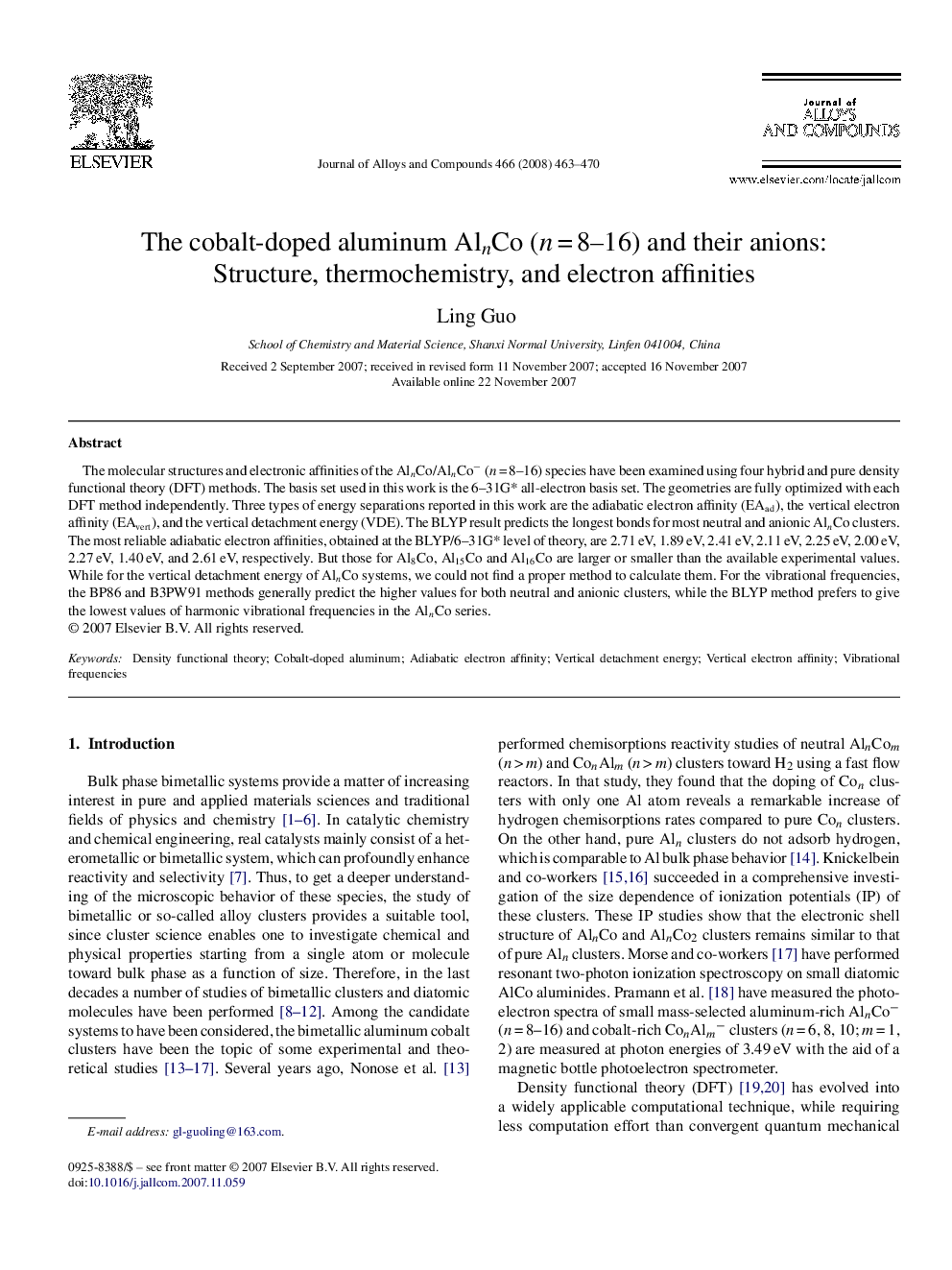| Article ID | Journal | Published Year | Pages | File Type |
|---|---|---|---|---|
| 1623609 | Journal of Alloys and Compounds | 2008 | 8 Pages |
The molecular structures and electronic affinities of the AlnCo/AlnCo− (n = 8–16) species have been examined using four hybrid and pure density functional theory (DFT) methods. The basis set used in this work is the 6–31G* all-electron basis set. The geometries are fully optimized with each DFT method independently. Three types of energy separations reported in this work are the adiabatic electron affinity (EAad), the vertical electron affinity (EAvert), and the vertical detachment energy (VDE). The BLYP result predicts the longest bonds for most neutral and anionic AlnCo clusters. The most reliable adiabatic electron affinities, obtained at the BLYP/6–31G* level of theory, are 2.71 eV, 1.89 eV, 2.41 eV, 2.11 eV, 2.25 eV, 2.00 eV, 2.27 eV, 1.40 eV, and 2.61 eV, respectively. But those for Al8Co, Al15Co and Al16Co are larger or smaller than the available experimental values. While for the vertical detachment energy of AlnCo systems, we could not find a proper method to calculate them. For the vibrational frequencies, the BP86 and B3PW91 methods generally predict the higher values for both neutral and anionic clusters, while the BLYP method prefers to give the lowest values of harmonic vibrational frequencies in the AlnCo series.
